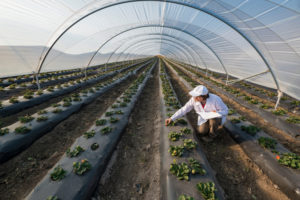The history of the cannabis industry is riddled with changes and conflicting legislation. The media has played a large role in shifting perspectives about marijuana and drug use. Today, we are watching the slow and steady change of mainstream opinion to consider cannabis one of the more harmless—and potentially beneficial—drugs still considered largely illegal. As perceptions change, we can expect the law to eventually follow suit.
The History of Hemp
The cannabis plant can be used for three main products: marijuana, cannabidiol (CBD oil) and hemp products. These don’t just differ in material type and use, but in how much THC they contain. THC (tetrahydrocannabinol) is the primary part of the cannabis plant responsible for causing a “high.”
There is a common misconception that hemp and marijuana plants are different species, but they are both cannabis plants. Hemp is defined as having much lower THC content (less than 0.3%). These cannabis plants won’t get you high, but they can be used to create all kinds of textile products.
Because hemp plants grow faster than trees or many other plants, hemp is considered a highly sustainable resource. Hemp has been grown as a fibre for thousands of years throughout the globe. It makes strong ropes, sails, canvas and clothing.
In 1619, hemp was considered legal tender and the Virginia Assembly passed legislation that required every farmer to grow hemp as an important domestic material.
During WWII, the slogan “Hemp for Victory” was used as a brief government-promoted campaign allowing its resurgence to help support. By 1943, American Farmers that were part of the program had produced over 375,000 acres of hemp. Hemp seeds can be used for non-intoxicating foods for both people and animals.
Despite its harmless nature, stricter drug laws were put into place in the 1950s. Hemp was banned in the US under the Controlled Substance Act of 1970 and still considered illegal in the US until 2018. In 2014, a farm bill started this process by defining cannabis plants with less than 0.3% THC as industrial hemp and made some allowances for growing industrial hemp in the US. The 2018 farm bill made it legal for industrial hemp to be grown and transported in the US.
In 2018, Montana was the largest hemp producer in the US, followed closely by Colorado. In 2019, the US was the third largest producer in the hemp industry, following China and Canada.
In 2019, the global industrial hemp market was an estimated $4.71 billion and forecasted to grow at a rate of 15.8%. The highest in-demand products were textiles, personal care, food & beverages and paper products.
What was the Cannabis Prohibition?
The first regulation of cannabis in the US was the 1937 Marijuana Tax Act. Many believe that the response to ban cannabis was racially motivated. Increasing numbers of Mexican immigrants were entering the US in the early 1900s, and the media took up a tone about the danger of marijuana that drove stricter drug and cannabis laws. The media made claims that “marijuana was known in India as the ‘murder drug.’”
Throughout the early 1900s, there were numerous claims in newspapers about how marijuana use caused insanity, promiscuity and violence. This move largely ended the use of marijuana as a recreational drug for most within the US, though it was not a well-known drug at the time.
During the Nixon era, the African American and anti-war groups were being targeted. Senior advisor to Nixon (John Erlichman) was later quoted:
“We knew we couldn’t make it illegal to be either against the war or black, but by getting the public to associate the hippies with marijuana and blacks with heroin, and then criminalizing both heavily, we could disrupt those communities. We could arrest their leaders, raid their homes, break up their meetings, and vilify them night after night on the evening news. Did we know we were lying about the drugs? Of course we did.”
This was what sparked the 1970 Controlled Substance Act. This combined over 200 prior drug laws into a single statute that regulated manufacturing and distribution of certain substances.
The Controlled Substances Act classified drugs into five “schedules” based on their potential for abuse and medical value. This made it easier to draft and modify laws that covered a group of drugs rather than each individual substance.
Schedule 1 drugs are the most strictly regulated and are deemed to have no medical value.
Marijuana was named a schedule 1 drug even though studies have shown a much lower potential for abuse and clearly beneficial medical uses. It has been considered a valuable medical drug for patients with AIDS, cancer, epilepsy and a wide variety of other medical conditions.
Cannabis Legalization and Reformation
Since the time it was first banned, there were movements to legalize cannabis. In the 1970’s, the pressure to legalize cannabis in California increased. Proposition 19 was put on the ballot in 1972 to legalize cannabis and only managed to get 33% of the vote.
There are essentially three different personal products that have been pushed for legalization:
- CBD
- Medical marijuana
- Recreational marijuana
The 2018 farm bill legalized CBD throughout the US as long as it followed the rules of staying below 0.3% THC. CBD oil has been found to help with anxiety, muscle spasms, insomnia, pain and other health issues.
In 1996, California became the first state to reverse the prohibition on marijuana. The state legalized medical marijuana, despite the law being at odds with Federal law. In 2012, Colorado and Washington were the first states to legalize recreational marijuana use.
In 2018, Canadian medical marijuana company Tilray became the first US cannabis IPO on Nasdaq. Tilray president and CEO Brendan Kennedy believes that when fully legalized in the US, smoking marijuana is going to only represent about 10% of cannabis consumption. He envisions a world filled with edibles and drinks that offer a relaxing alternative to alcohol with no hangover.
The Cannabis Industry Today
Slowly, more research is being funded to show the benefits and concerns surrounding cannabis.
Between 2000 and 2018, $1.56 billion was spent on funding cannabis research—half of which was looking at the potential harms of the drug in recreational use. This meant that trying to understand the harms of cannabis got 20x the funding of any other topic, with very little research money (less than $5 million) going towards a better understanding of cannabis therapeutic use.
During this same time period, Canada spent $32.2 million, with most of the funding looking at the endocannabinoid system (how the body responds to the cannabinoids).
Research has been hindered due to the US DEA considering marijuana a Schedule 1 drug. Without adequate testing for medical benefits, it’s difficult to break the threshold needed to demonstrate marijuana doesn’t belong on that list. But, research is restricted because cannabis is listed as Schedule 1. If placed on the Schedule 2 list, marijuana could be looked at next to drugs like oxycodone.
After passing legalization of cannabis in New York in March of 2021, some experts are concerned the 13% tax is too high to compete with the NYC black market for marijuana.
As of April 2021, recreational marijuana has been medically legalized in 17 states and recreationally legalized in 36 states.
But, the signs are clear—the cannabis industry is becoming more mainstream and legitimate cannabis businesses are starting to take root in the US.
Increased research and technology has been examining improvement of the cannabis growth processes to improve crop sizes and reduce resource use. Cannabis offers unique agriculture challenges because it grows like a weed and can be difficult to produce a consistent crop. Weather, space, pests, irrigation and light are all issues that can impact cannabis growth.
Cannabis Industry Statistics
A Gallup poll in 2019 found 12% of Americans identify themselves as active marijuana users—this number has doubled since 2013. More than half (51.5%) of 18-25 year-olds report using marijuana at least once in their life.
Gallup also reports 14% of Americans are CBD users. Users are most likely to use CBD for pain (40%), anxiety (20%) and insomnia (11%).
And, 68% of Americans say they are in favor of legalizing marijuana.
The national sales of cannabis increased by 67% in 2020 to nearly $18 billion. This is likely due to increased fear and stress caused by the pandemic. The more people were locked in, the more they were looking for something to help them relax. The shift in public perception also played a large part in this boom.
Delivery companies, like San Francisco-based Eaze, have reported a decrease in vape sales and increase in edibles. A decrease in smoking products may be due to concerns about breathing issues during the COVID-19 pandemic. In 2020, edibles made up 22% of Eaze sales.
Jobs in the Cannabis Industry
There are many jobs starting to open up in the cannabis industry, including cannabis producers, growers, manufacturers and retailers. Some of the areas where we have helped bring in industry professionals include:
Executive Positions
- Chief Financial Officer
- Head of Sales & Business Development
- Laboratory Director
- Operations Manager
- Plant Controller
- Content Director
- Creative Director
- Social Director
Director of IT
Management Positions
- Assistant Farm Manager
- Dispensary Store Operations
- Farm Operations Supervisor
- Crop Production Assistant Manager
- Quality Control Manager
- Seed Production Manager
Procurement Manager
Scientific Positions
- Flavor & Fragrance Scientist
- Sr. Scientist, Molecular Breeder
- Applied Genetics Scientist
- Scientist II
- Molecular Breeding Scientist
- Senior Data Scientist
- Bioinformatician
- Asst. Seed Breeder
Sr. Data Scientist
At PeopleSuite, we have experienced consultants who are helping connect businesses with the right team members to fill the gaps. If you are looking for a talent search partner to help build your team or help you find a spot on the right team, connect with us today!












